Ohmie, the orange lamp, is born to make the world a better place to live in. A new design revolution has been activated, and it all starts with orange peels. Designed by the creative team of Krill Design, Ohmie, the first lamp in the world totally composed of orange peels, is a symbol of a possibility that becomes reality. Together, we’ve been changing radically the way furniture, products, and objects are designed, produced, and consumed. Sustainable is no more an adjective, but the norm.
Ohmie, the orange lamp, is the first project realized by the design studio Krill design based in Milan, founded in 2018 by Ivan Calimani, Martina Lamperti, and Yack di Maio to apply 3D printing to create biodegradable design objects. The idea behind the project was to find a production method for new design objects and furniture that would put together sustainability, passion, innovation, and aesthetic design. Following the concept of capturing new sustainable material resources and a manufacturing process that would include a circular economy system 100% at work, Krill design managed, in just a couple of years of deep research, to transform those ideas into a concrete reality. Thanks to our will of in-depth analysis, the team of creatives in Krill design has specialized in turning unwanted materials into bio-materials filaments, from which we create our recyclable design objects. The main issues of the production process, regarding the complicated transition from the identification of the material resource to the actual manufacturing procedure, are solved by Krill design adopting an internal development of resources. Following this way of working, and thanks to the application of 3D technology, we can maintain a high sustainability range for the entire cycle of our manufacturing process. Being our first realized design project, Ohmie, the orange lamp, has become our symbolic statement within the design world. We brought such an iconic design object - the lamp - into a completely new production perspective. The choices you make in terms of the manufacturing process and material resources are the key factors to building up together a brighter future, where the creation of design objects would respect the environment and the life cycle of the natural resources. Innovation, study, and responsibility shape our minds: Ohmie is just the first idea that has seen the light.
Please highlight how the project can be exemplary in this context
The key objectives of our project come from an issue that Krill design turned into an opportunity: while nowadays many companies catch and recover the production waste of paper, plastic, and glass, no one instead has thought to use the organic products of the food chain. Krill design managed to turn those losses into precious material resources. Therefore, to maintain the circular economy process 100% at work, to design Ohmie, the orange lamp, we needed a material that would not run out and, given the citrus fruit’s ubiquity in Sicily, that allows us to stock up on the peels and be able to always produce Ohmie sustainably. Also, oranges are rich in carbohydrates, the perfect bonding substance to create a bio-material with. Krill design challenges not only the choice of material resources but also the environmental impact of the production process. For this reason, we choose to experiment with 3D technology to realize our design project. 3D printing is, indeed, the best present technology to reduce at minimum production waste and energy consumption. Thanks to that, our lab of digital manufacturing is able to create an Ohmie in an on-demand process, which allows us to not make one more object than needed. We have finalized this method, reaching the point to also be able to recover any printing errors: we collect them, convert them back again into bio-material filaments and reuse them to create another Ohmie. Circularity and sustainability are applied in every step of our manufacturing process. Drawing inspiration from the cycles of nature, Krill Design stands in antagonism to the "take, make, dispose of" model, and proposes a new paradigm that fights the scarcity of resources and collaborates in environmental regeneration by working on the creation of disruptive solutions. Krill's design reality is exemplary to achieve a future in which sustainable practices are the norm, and recycled materials and design the leitmotif of a zero-impact lifestyle.
Please highlight how the project can be exemplary in this context
Although sustainability and respect for the environment are the main goals of our project, we still aim at establishing Krill design as a Milanese design studio. The past - and the present - of the city as a successive cultural melting-pot of creative designers drives us to develop a specific and recognizable design aesthetic. Our inspiration draws from the new sustainable material we identify first and then develop for every collection we create. The design of the products realized by Krill design enhances the organic material of origin through elegant lines and material surfaces that give back sensations linked to the world of nature. The texture, the color, and even the smell of Ohmie, The Orange Lamp, preserve the original material made of orange peels. Aesthetic design and quality of experience are in this way unified by the material resource used to produce the product. Our production system is after all our main source of inspiration to achieve a unique aesthetic design and a high quality of experience for the customer. Our objective is, therefore, including and involving the public as much as possible in our sustainable way of manufacturing, to give a full experience also in terms of information and awareness. It is crucial to Krill design to give a concrete example of how it is possible to create a design object being conscious of the environmental impact. Krill design wants to establish itself as a design studio, but, more importantly, we want to open minds and inspire people to find new alternative ways of living.
Please highlight how the project can be exemplary in this context
Krill design believes in the green transformation based on the cooperation among local communities. To find new natural material resources we work in collaboration closely with small producers of the food industry. That guarantees us a faithful relationship with our suppliers, from which we often receive precious advice on how to manage, transform and use the material resource. Confrontation and exchange of ideas stimulate our creative team once they design a new project. To design Ohmie, the orange lamp, we presented the project on Kickstarter, an online platform born to assist creative projects, in which a group of passionate people gathered around our project, supporting it and following its growth: we create a shared community. The design revolution we conceived is, for this reason, made by people to the people. Krill design gives a concrete contribution to making this world a better place by actively including people, organizations, communities, and companies through the itinerary of transition toward circular sustainability most effortlessly and elegantly. Following our concept to spread sustainable practices, Krill design works in collaboration with other contests of interest to help them develop a sustainable way of production. The project in collaboration with Autogrill is a perfect example of that: we recovered the oranges scraps of the freshly squeezed orange juice and designed a series of sachet holders for sugar and stools to be used in the shops. The objective of inclusion in our project is found also in our concept of a widespread factory, where everyone in the future will be able to print their design objects in a 3D printing hub close to home. This venture responds to the need of making sustainability not a privilege of a few, but an opportunity for the many.
Please highlight how this approach can be exemplary
Aesthetic, inclusion, and sustainability: three solid principles on which our project, Ohmie, the orange lamp, is based. Everything started experimenting with 3D printing, the best technology present today with low environmental impact, but unlikely not so popular within industrial production of design objects. The main difficulty is adapting the project to the technical constraints of 3D printing, which means that the design team has to find creative solutions to adapt the desired aesthetic to the machine-specific formulas. To the most creative designers, this could be a sort of obstacle to pass, but in the case of Krill design, and especially, the project Ohmie, the orange lamp, this limit became an opportunity for a productive discussion. We involved common people, passionate about design, and professional designers in the creation of Ohmie’s aesthetic, presenting the project on an online platform for emerging projects and keeping them informed at all times. Through a productive confrontation, we managed to transform a limit into an advantage. Ohmie, the orange lamp, developed its aesthetic in harmony with the contest in which it was born, reflecting Krill design’s will to contribute to a better way of living in synergy with nature. Guided by the principles of sustainability and inclusion, we found a remarkable aesthetic that we couldn’t think to catch in any other way. We strongly believe that the project Ohmie, the orange lamp, is an accurate example of how solid principles can help overcome obstacles and limits, even if in the first place it seems not. Ohmie, the orange lamp, tells the story of a concrete possibility: the green transition.
Krill design was founded in 2018 with the inner intention of bringing to life an idea moved by the principles of sustainability, respect for nature, and passion for product design. To start a revolution within industrial production, whether it is about design or any other industrial field, a significant change of paradigm is extremely needed. The current linear economic model is causing the exhaustion of natural resources and the traditional practices of manufacturing are exponentially increasing atmospheric emissions, creating irreparable and unpredicted damage to our ecosystem. The first fundamental achievement for Krill design is to have found an alternative way to the traditional economic model, by introducing a new kind of material resource, the bio-material, developed by Krill design and originated by unwanted materials from the food chain. The change of paradigm, in this case, is about looking for a possible and practical way to avoid new extractions of raw materials, and, instead, take advantage of a resource already existing. Being able to manage waste from the food chain and transform it into material resource means not only making a contribution in terms of energy consumption and preservation of the environment; it represents, more importantly, a significant change in the way we think of the natural resources, which, contrary to what it seems to be, they are not unlimited and, especially, not always available. Krill's design method of working helps to recognize that a change is needed in the way we think about nature, respecting, first of all, the times of nature, supporting the growth of life on our planet. That is what for Krill design circular economy means: shaping a production process that respects nature in its life-cycle thinking and helping others follow this lead.
Please also explain the benefits that derived from their involvement.
The project Ohmie, the orange lamp, would be useless if it did not represent a source of inspiration for people. That’s why, to design Ohmie, the orange lamp, we asked first for people’s opinions, presenting the project on Kickstarter, an online platform born to assist creative projects. Thanks to this platform, Krill design managed to let the project Ohmie, the orange lamp, be known by the people, who were supporting the project economically and, more importantly, emotionally. In a short time, we created a dense community of people passionate about sustainability and innovation in the field of product design. Their support was more important in terms of believing in our project than making donations to see an Ohmie in real life. That’s why we involved our community as much as possible by giving constant information on the fulfillment of the project. We were keeping them informed for the whole production process, and by doing so, the main benefit for them of having accomplished this community was certainly to have found a safe place where to speak openly, give opinions, and be heard: we created a platform of open dialogue. Although donations have effectively helped the realization of the project Ohmie, the orange lamp, the community born around our project brought to light an unexpected and even more appreciated result: the creation of a design object realized together, in collaboration with the citizens. On our website, a sponsor wall demonstrates the cooperation and involvement of the people for this project. From this experience, we learned that our project had the power to inform people about new solutions, new ways of thinking the industrial production. School education has above all the power to shape young minds, therefore, we are trying to make school meetings and workshops to inspire the youngest through the green transition, stimulating a mindset available to transformation.
While nowadays many companies catch and recover the production waste of paper, plastic, and glass, no one instead has thought to use the organic products of the food chain to create design objects. About a third of the food produced worldwide for human consumption every year is lost or wasted. Krill design turns this global issue into an opportunity for transformation and inclusion: those losses become resources. We recover and manage those wastes from the food chain and innovate their use in the production system. The bio-material that we can develop from those losses - called Rekrill Orange in the case of using orange peels - is 100% biodegradable and compostable, as they are the objects realized with, for which you can easily throw your Ohmie, the orange lamp, into the organic disposal at the end of its life. The circular economic system we developed and patented is in this way activated from the first production process to the ultimate phase of our object's life. Thanks to Rekrill Orange, we value the resources of nature and respect the environment, cause 1 kilogram of material equals the compensation of 1 kilogram of CO2, and to design one Ohmie, the orange lamp, we just need two or three oranges. Krill design believes in an industrial production system based on the cooperation with local communities and due to being able to respond effectively to our purchase requests we needed a material that would not run out easily. Given the citrus fruit’s ubiquity in Sicily, produced mostly by local agricultural family-run companies, we decided to make close contact with these realities that allow us to stock up on the peels and be able to always produce Ohmie, the orange lamp, in a sustainable way.
It is well known that nowadays many design studios are adopting more and more sustainable practices and alternative solutions applied to the production process. As the global public opinion started to be more concerned about the status of our planet, eco-friendly ways of manufacturing have spread all around the world, involving, along with the many industrial sectors, the design world. Creative and alternative solutions have found a way of living within this world: from the recycling of production waste of plastic, paper, and glass, to the recovery, in the case of Krill design, of production waste of the food chain. We are currently the first studio design doing so, and Ohmie, the orange lamp, is the world’s first lamp made by orange peels. Krill design does not distinguish itself just for choosing to use the production waste of the food chain, but, most importantly, because we collect those unwanted materials, such as orange peels, and transform them into our bio-material, the Rekrill Orange, for which we have been patented. Bio-materials filaments are essential due to our application of 3D technology: another innovative solution found by Krill design. Developing our material resources allows us to contain any additional waste within the manufacturing process, and experimenting with 3D printing helps Krill design to pay attention also to the environmental impact of our production process. 3D printing is, indeed, the best present technology to reduce at minimum any further environmental emissions. It is not a popular solution though, due to the technical difficulties of use. Krill design, instead, managed to take advantage of his creative team’s skills and talents to achieve our main goal: help people find new and better ways of living in synergy with nature.
Please provide clear documentation, communication of methodology and principles in this context.
Krill design desires to contribute to generating a new revolution in the production of design objects. We plan to do so by experimenting with new materials and new techniques to integrate into the manufacturing process. By transferring those solutions to other contests, our will is to trigger this revolution and to involve as many people, organizations, communities, and companies as possible in the creation of a better future where the production process works in synergy with nature. Krill design’s main aim is to translate its core principles of sustainability, aesthetic design, and cooperation with nature into everyday life to encourage the collective pursuit of green transformation. Following our concept to spread sustainable practices, Krill design works in collaboration with other companies to help them develop a sustainable way of production. The project in collaboration with Autogrill is a perfect example of that. We have been asked to find a way to recover the oranges scraps of the freshly squeezed orange juice, from which we created our bio-material. As a result of this process, we created, by 3D printing, a series of sachet holders for sugar and stools to be used in the Autogrill shops. The design objects conceived and created for Autogrill tell a story of a green model capable to be applied in any contest: every waste has the potential to become a resource to create something new. Being sustainable is a concrete possibility, but to spread this way of work, people should pay more attention to what they buy and ask: What is it made of? How do they obtain the material? Which kind of production process do they use? Those are key information to understand how a company makes its own decisions in terms of production. For this reason, Krill design engages in a series of meetings at school as well. We believe education is needed to help people choose responsibly. Change is possible, but only if we do it all together.
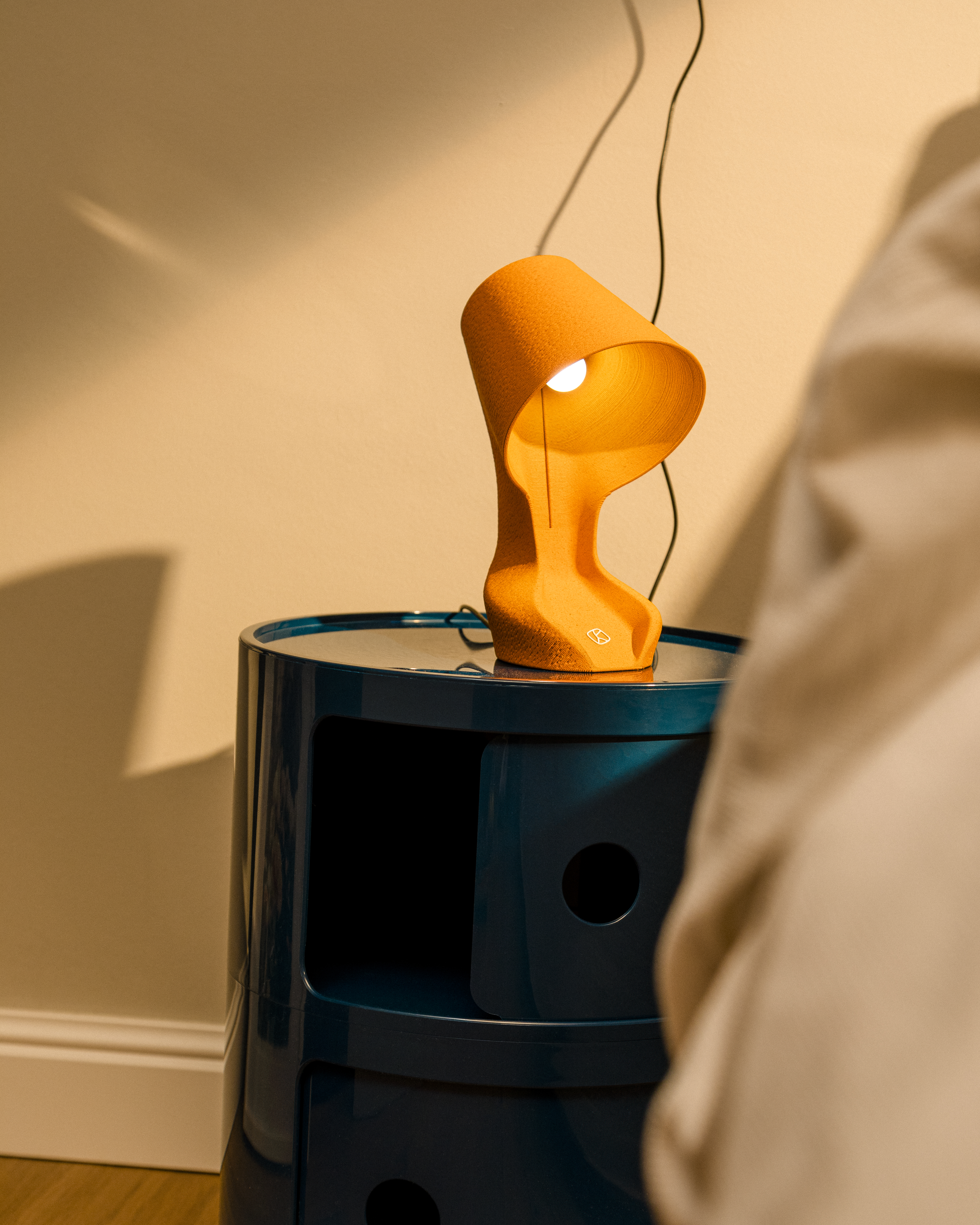
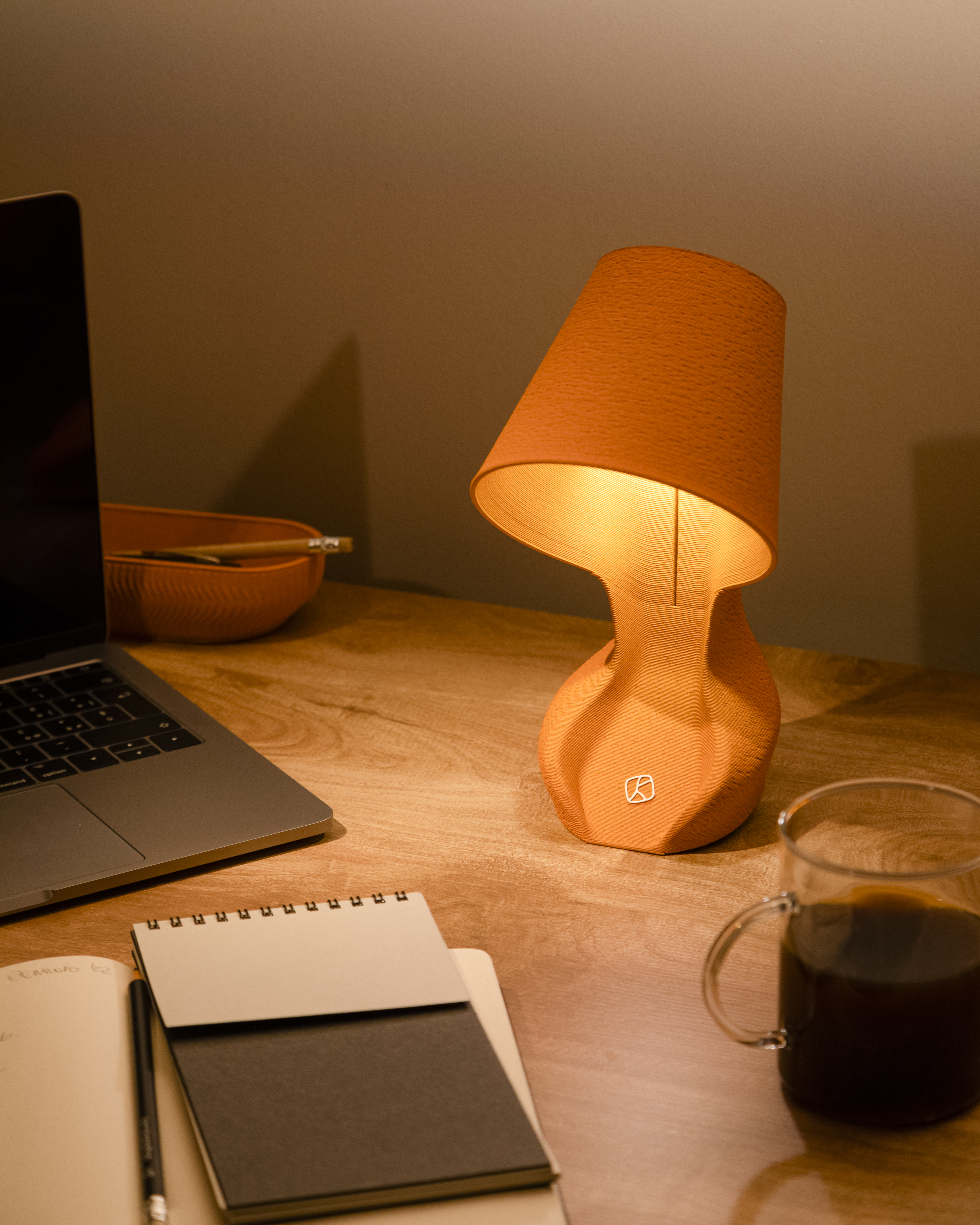
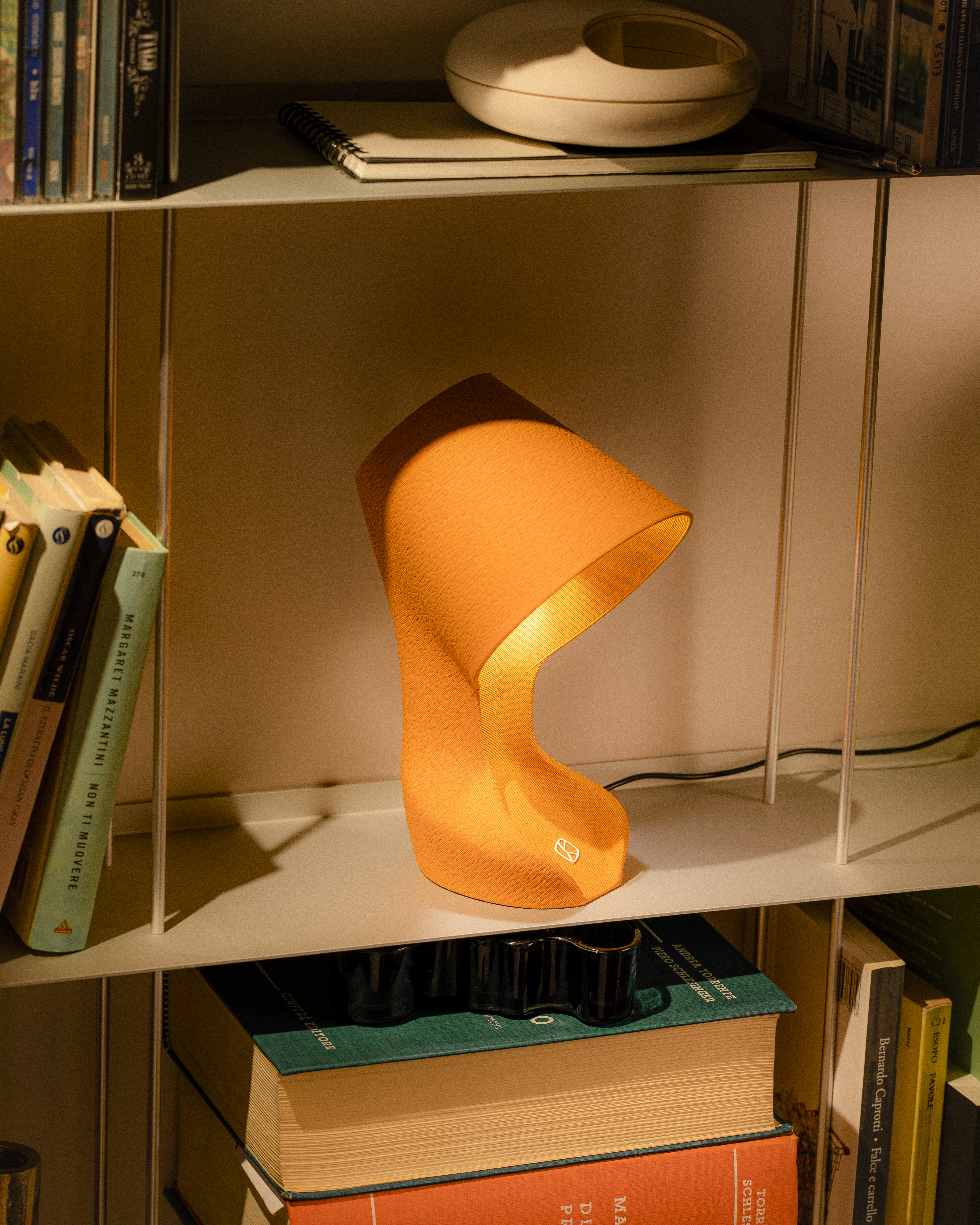
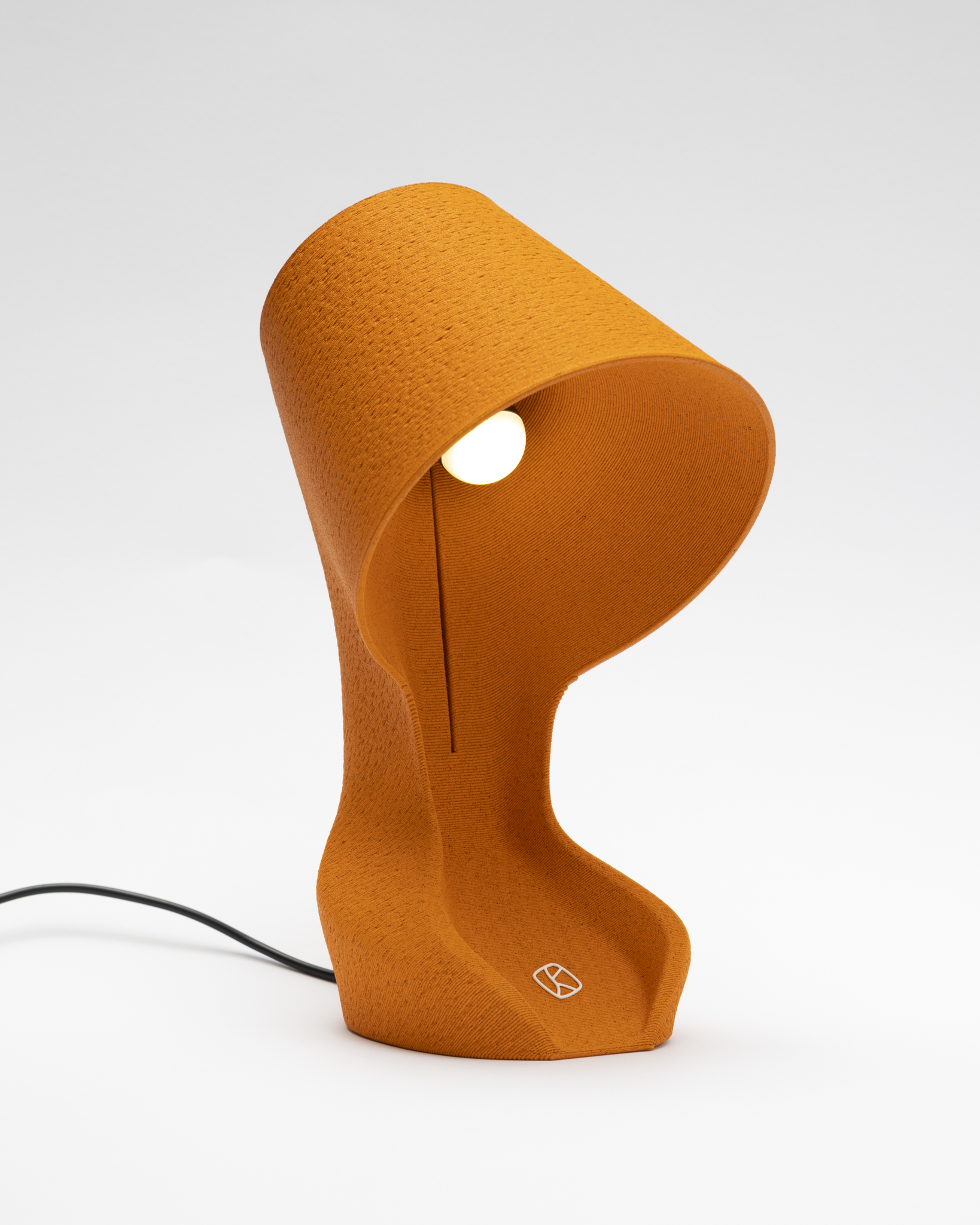
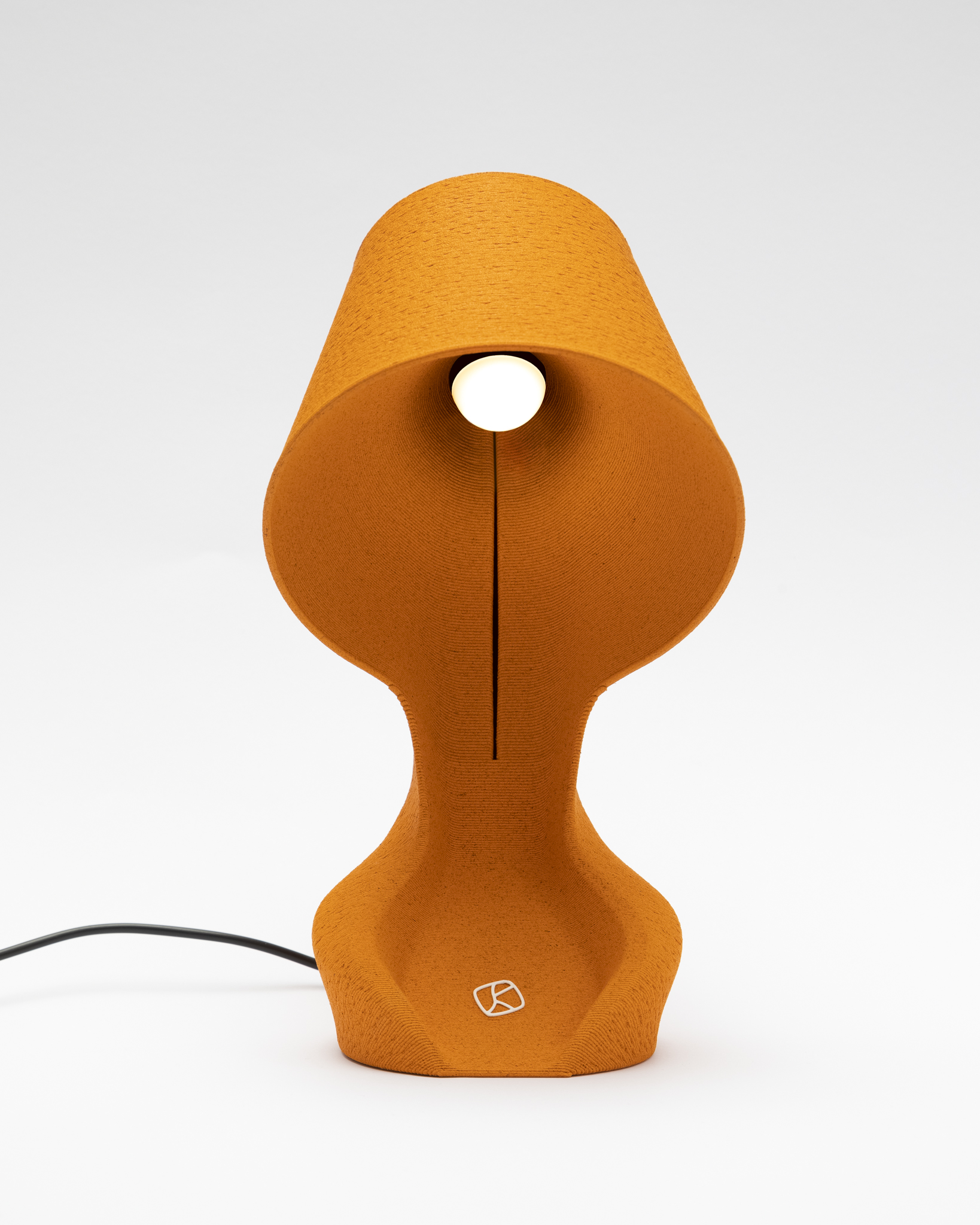
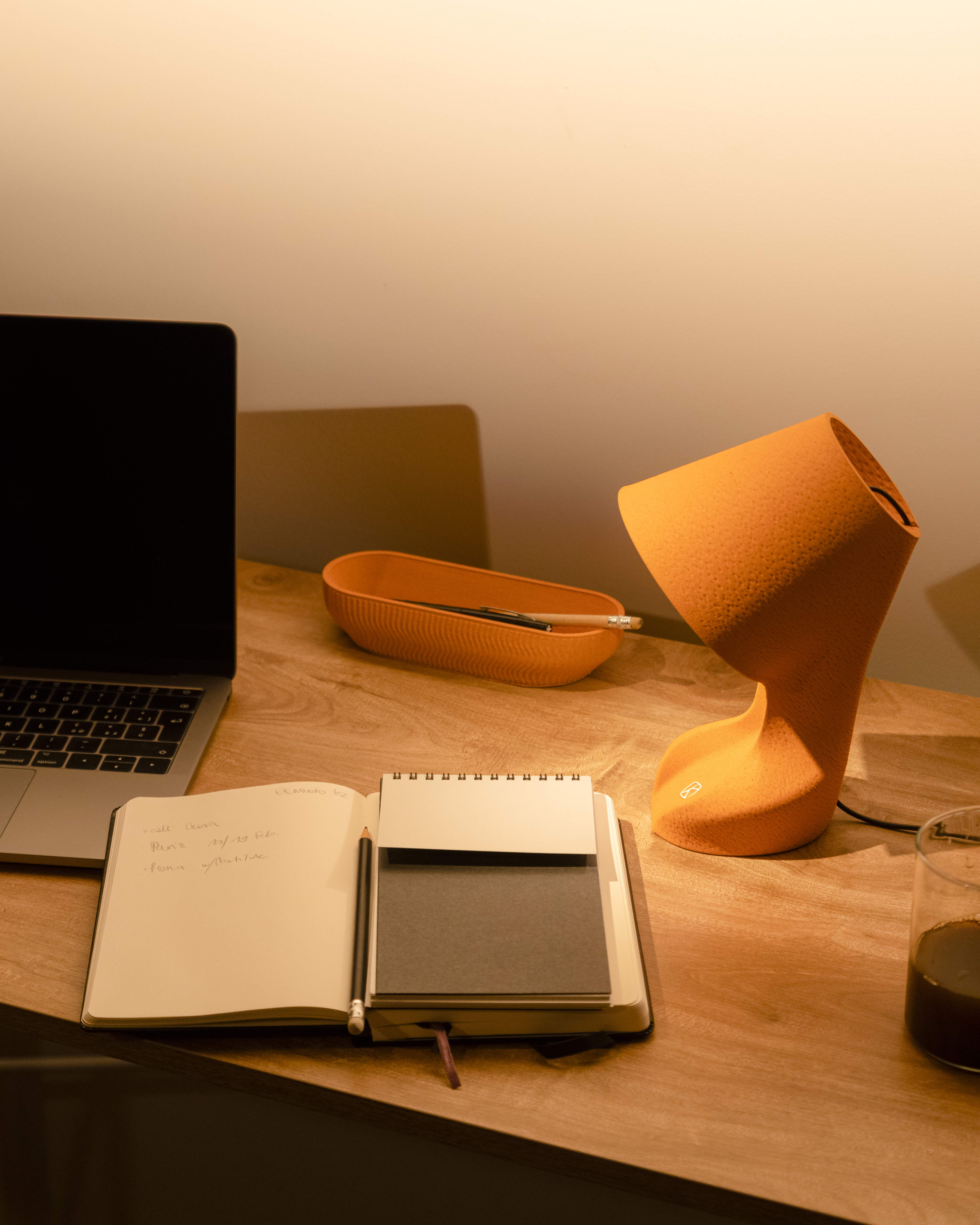
@Krill Design, 2021
Content licensed to the European Union.